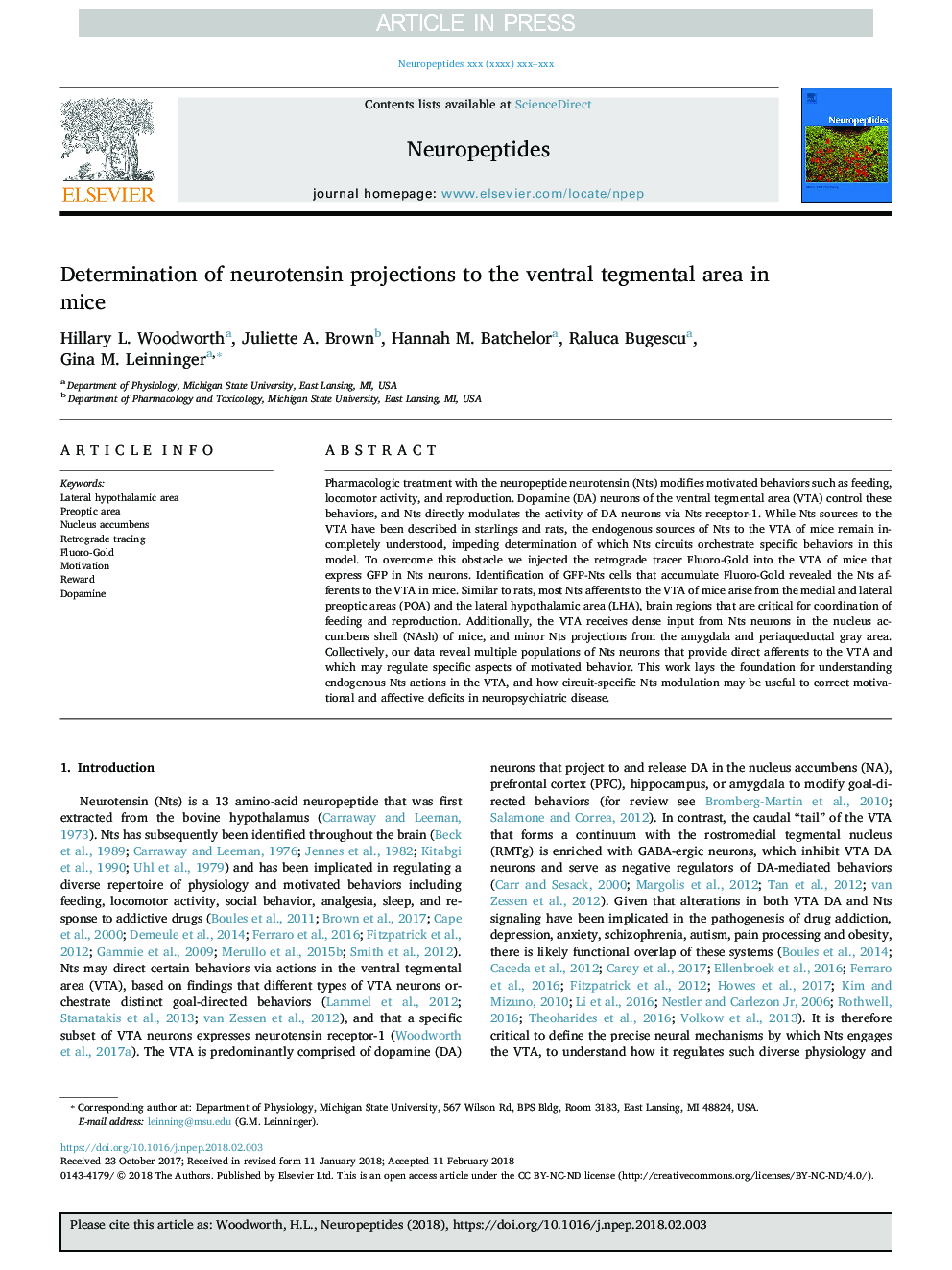| Article ID | Journal | Published Year | Pages | File Type |
|---|---|---|---|---|
| 8633292 | Neuropeptides | 2018 | 18 Pages |
Abstract
Pharmacologic treatment with the neuropeptide neurotensin (Nts) modifies motivated behaviors such as feeding, locomotor activity, and reproduction. Dopamine (DA) neurons of the ventral tegmental area (VTA) control these behaviors, and Nts directly modulates the activity of DA neurons via Nts receptor-1. While Nts sources to the VTA have been described in starlings and rats, the endogenous sources of Nts to the VTA of mice remain incompletely understood, impeding determination of which Nts circuits orchestrate specific behaviors in this model. To overcome this obstacle we injected the retrograde tracer Fluoro-Gold into the VTA of mice that express GFP in Nts neurons. Identification of GFP-Nts cells that accumulate Fluoro-Gold revealed the Nts afferents to the VTA in mice. Similar to rats, most Nts afferents to the VTA of mice arise from the medial and lateral preoptic areas (POA) and the lateral hypothalamic area (LHA), brain regions that are critical for coordination of feeding and reproduction. Additionally, the VTA receives dense input from Nts neurons in the nucleus accumbens shell (NAsh) of mice, and minor Nts projections from the amygdala and periaqueductal gray area. Collectively, our data reveal multiple populations of Nts neurons that provide direct afferents to the VTA and which may regulate specific aspects of motivated behavior. This work lays the foundation for understanding endogenous Nts actions in the VTA, and how circuit-specific Nts modulation may be useful to correct motivational and affective deficits in neuropsychiatric disease.
Keywords
Related Topics
Life Sciences
Biochemistry, Genetics and Molecular Biology
Endocrinology
Authors
Hillary L. Woodworth, Juliette A. Brown, Hannah M. Batchelor, Raluca Bugescu, Gina M. Leinninger,
